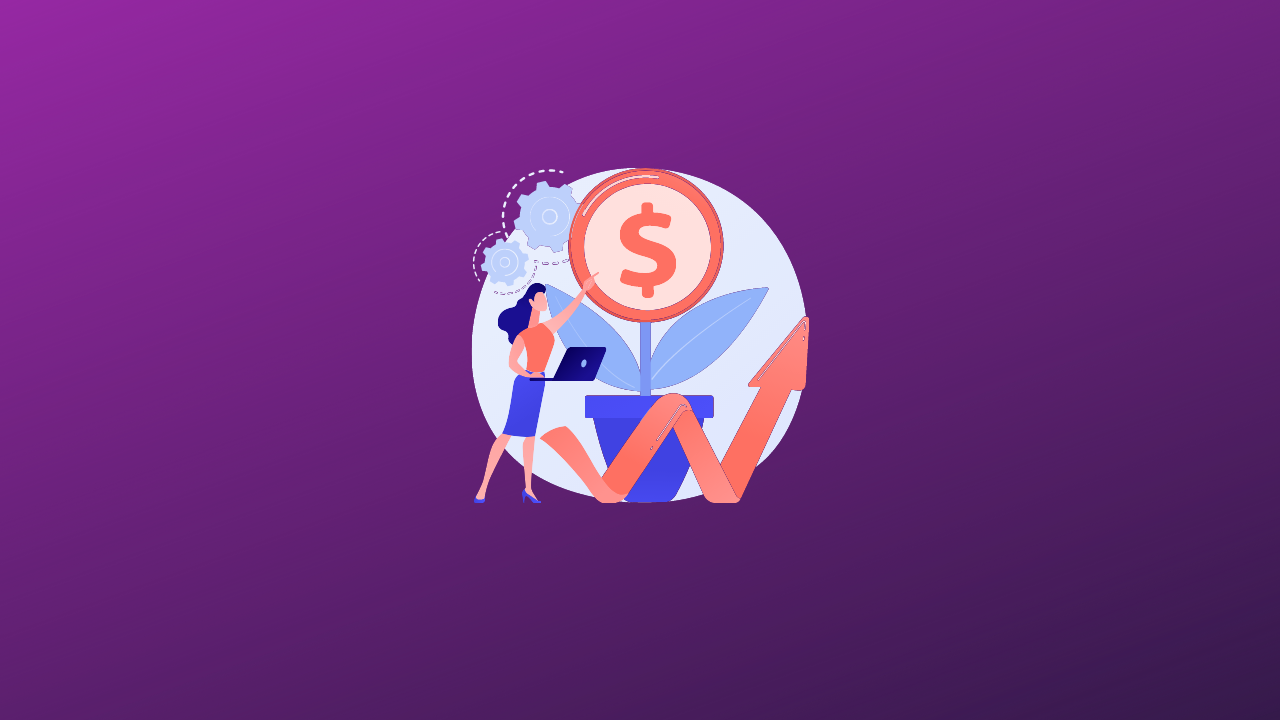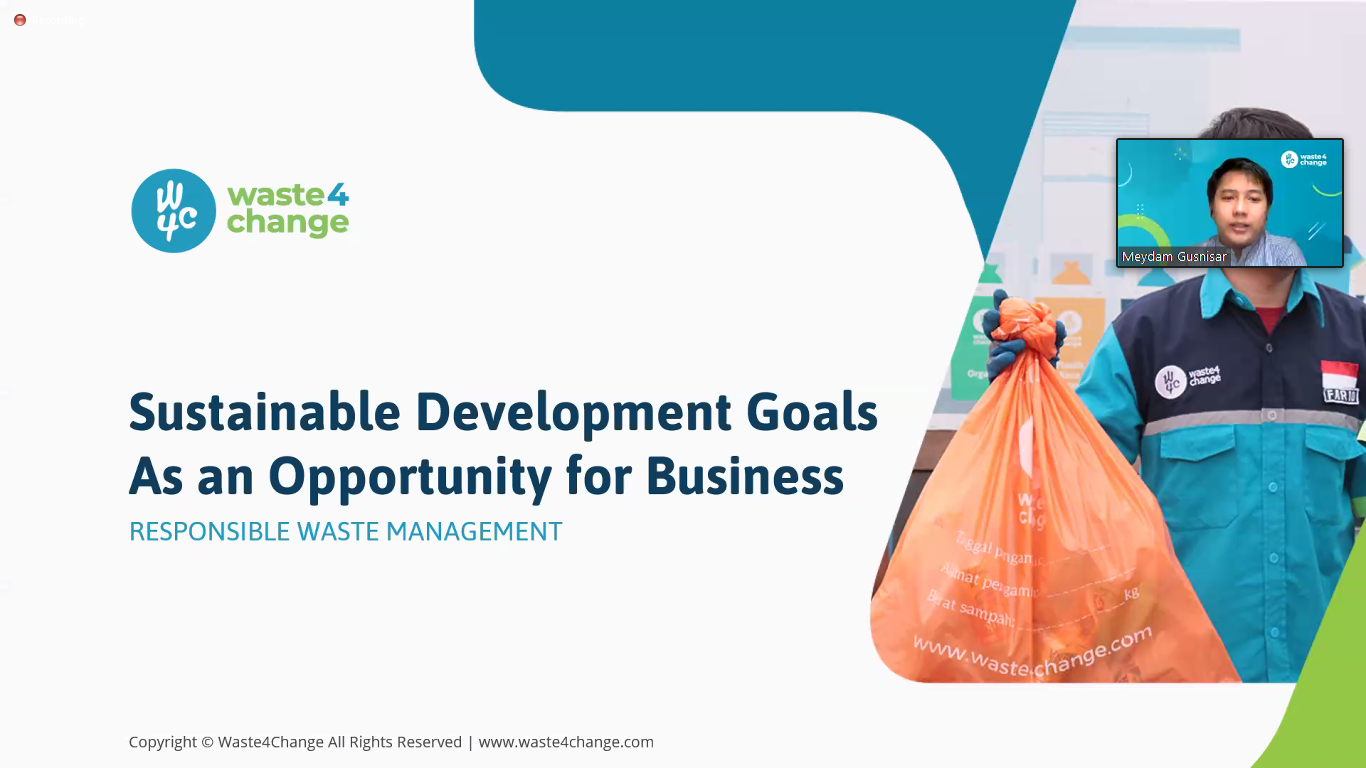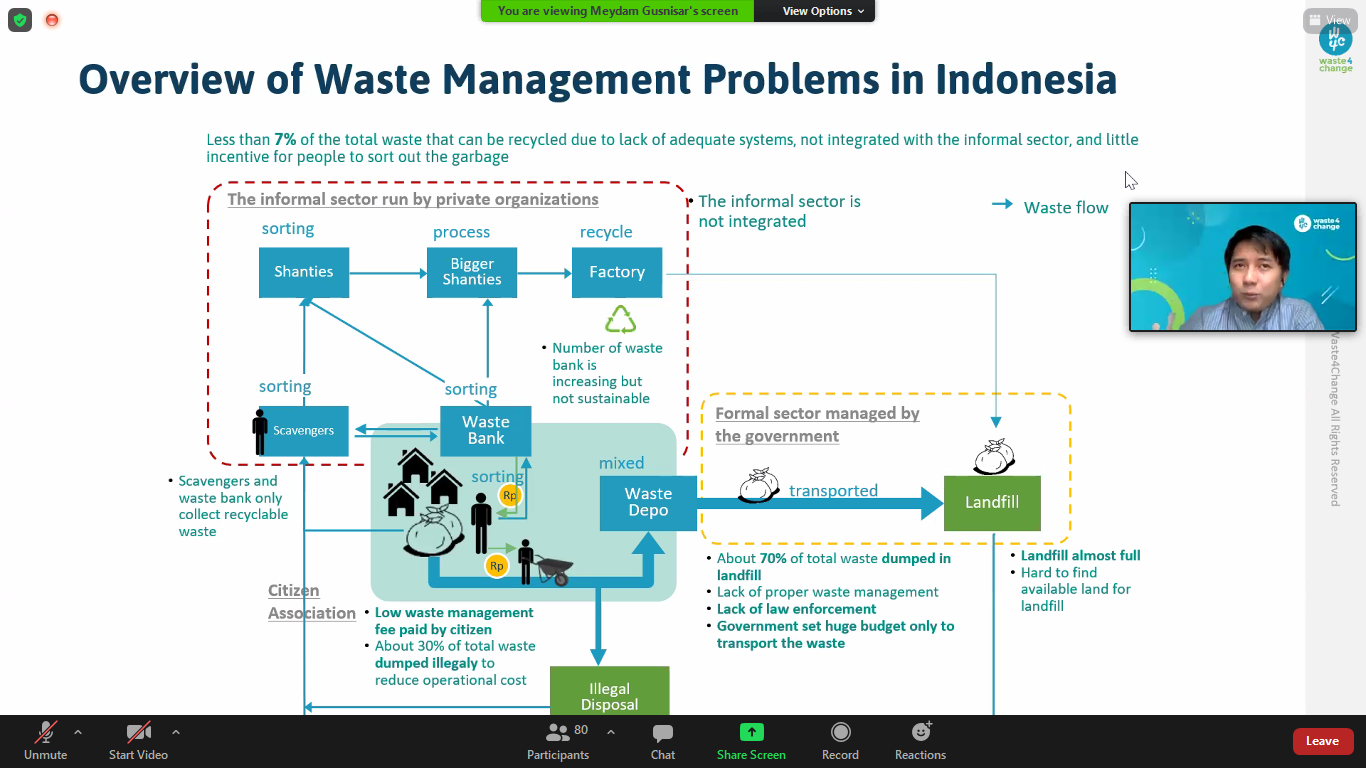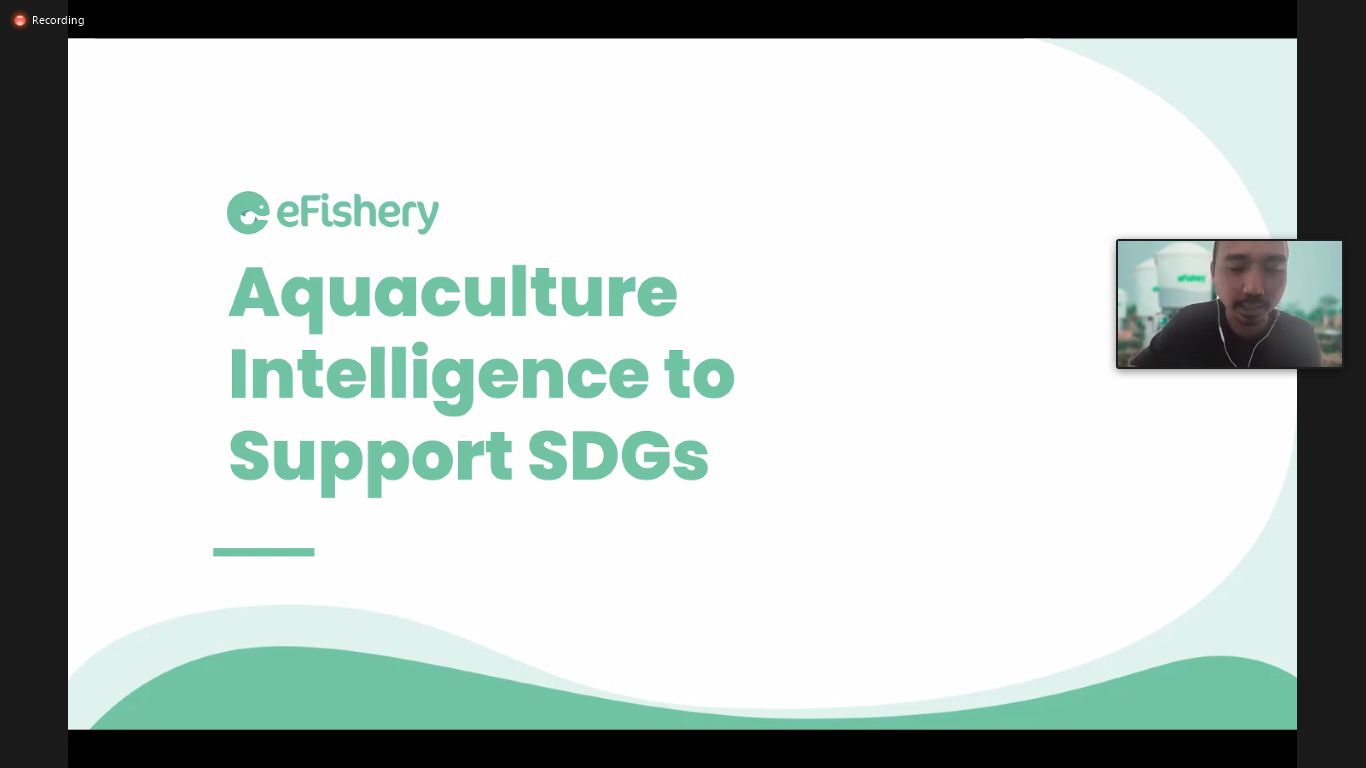Only 9 percent of waste has been sorted and recycled properly, even though 80 percent of Indonesia’s waste can be recycled.
It was revealed at the environment management system class discussing “Integrated Business Idea and Aligning Entrepreneurship with SDGs”, Wednesday (21/7/2021).
The first speaker is Meydam Gusnisar, MBA, the Head of Research and Development and temporary Head of Finance of PT Wasteforchange Alam Indonesia. And the second speaker is Chrisna Aditia Wardani of CPO E-fisheries. These two guest lecturers are business people in one of the well-known companies in Indonesia who make the value of SDGs their business opportunity.
Meydam said there are various types of garbage, such as food waste, plastic, paper, glass, etc. These wastes are categorized into two types: organic and inorganic. Organic waste has the advantage because it is easy to decompose and can be processed into fertilizer. However, if this waste is left for two days, it will cause a bad smell that makes people feel uncomfortable. In contrast, inorganic waste can be stored for a long time; it will not cause odours but impact the environment.
Waste also causes another problem, full capacity landfills that sometimes causes an avalanche due to the amount of waste deposited. Thus, it can be concluded that some waste problems that occur due to the system of waste management and processing are not yet maximized.
“This can happen due to several causes: the lack of implementation of law enforcement, regulations developed not based on existing data, lack of good coordination in the development of regulations, all waste management activities are not well monitored,” said Meydam.
In addition, waste problems occur because of the lack of coordination in the waste management process, the challenges of geographical aspects, lack of integration in its implementation, lack of communication, the inadequate technology used, lack of a platform to conduct waste management collaboration and the lack of costs. These are the things that cause waste processing and management in Indonesia has not been implemented responsibly and maximally.
“Therefore, Wasteforchange is here to solve the problem. Wasteforchange itself is a company that provides waste management services from upstream to downstream with a vision of reducing the amount of waste that ends up in landfills. We will also change the mindset of people about waste management from a linear economy to a circular economy,” said Meydam.
Wasteforchange uses end-to-end systems for waste management. The first thing to do is provide education and training on managing and processing waste optimally and responsibly. Then, Wasteforchange also facilitates a waste-sorting system and ensures every process runs well. Thus, the waste can be processed properly, and the waste that enters the landfill is only non-recyclable waste, such as food packaging waste with remaining food scraps. Solving this garbage problem needs cooperation from many related parties.
E-Fishery
In addition to the problems about waste management that is not optimal, some problems arise related to aquatic hygiene. Usually, the fishermen of fresh fish will feed randomly to the fish; the fish food is not channelled properly and eventually settles in reservoirs. This certainly threatens the cleanliness and sustainability of water.
This problem led Chrisna Aditya and her friends to initiate an idea to make it easier for fishermen to provide fish food effectively and optimally. Thus, came a technology called e-fishery.
E-Fishery is a technology that can automatically feed fish, and the machine will work only using SMS commands. This technology helps fishermen to maintain the sustainability of the fish ponds used. E-fishery has three main values: creating aquaculture technology, providing technology at an affordable price, and implementing an inclusive digital economy.
“Indonesia is the second-largest country with a potential marine and fisheries of $1.2 trillion, with 30.2 million pounds and 3.3 million fishermen. Fisheries is also a fast-growing food sector of $3.9 billion annually,”- said Chrisna.
An e-fishery will help fishermen and businesses who need fish in running their business with an end-to-end aquaculture value chain. It also supports the implementation of the following SDGs points: increasing the adoption of IoT and digital technology for fish farmers (SDGs point 9), fostering the regeneration of fish cultivation (SDGs point 8), supporting food security and improving nutrition in Indonesia (SDGs pounds 2 and 12), and improving the standard of living and welfare of fish farmers (SDGs point 1).
E-fishery itself has several programs such as eFisheryFarm (Smart Feeding Machine), eFisheryMall, eFisheryKabayan (Pay later system), and eFisheryFresh).







